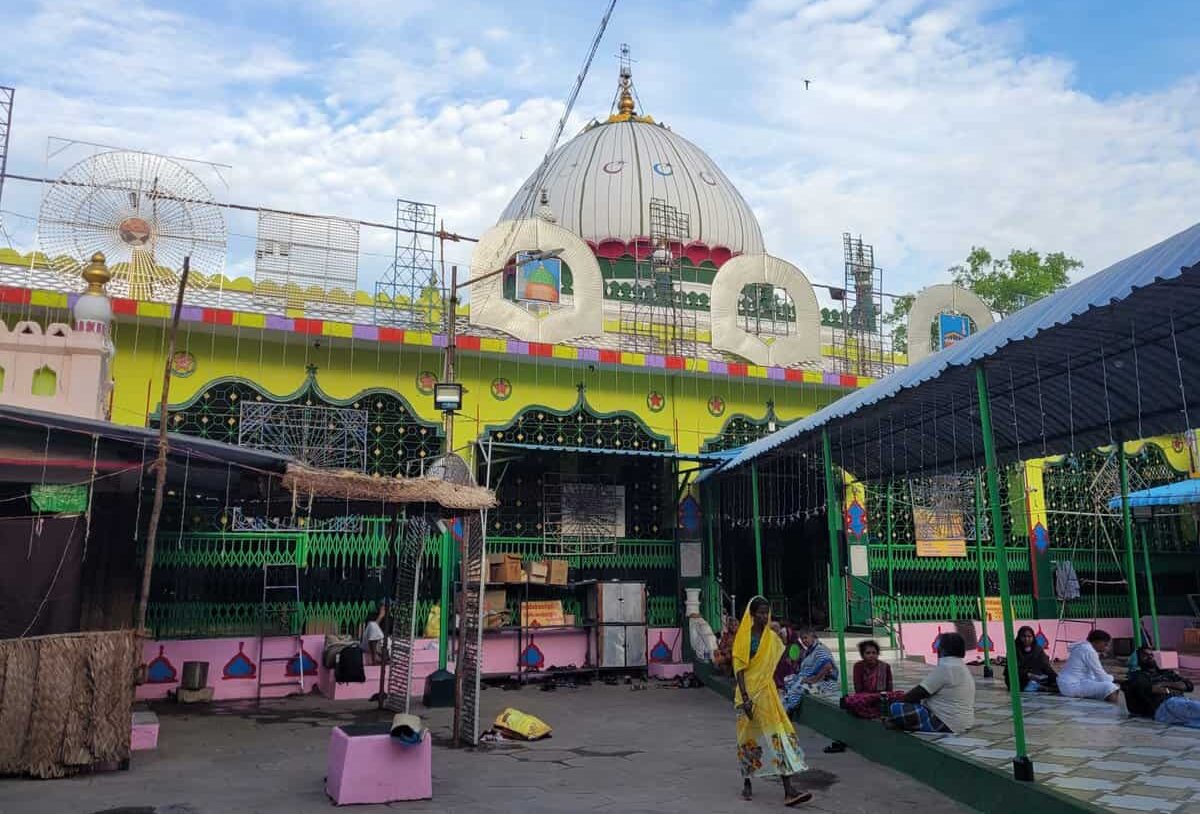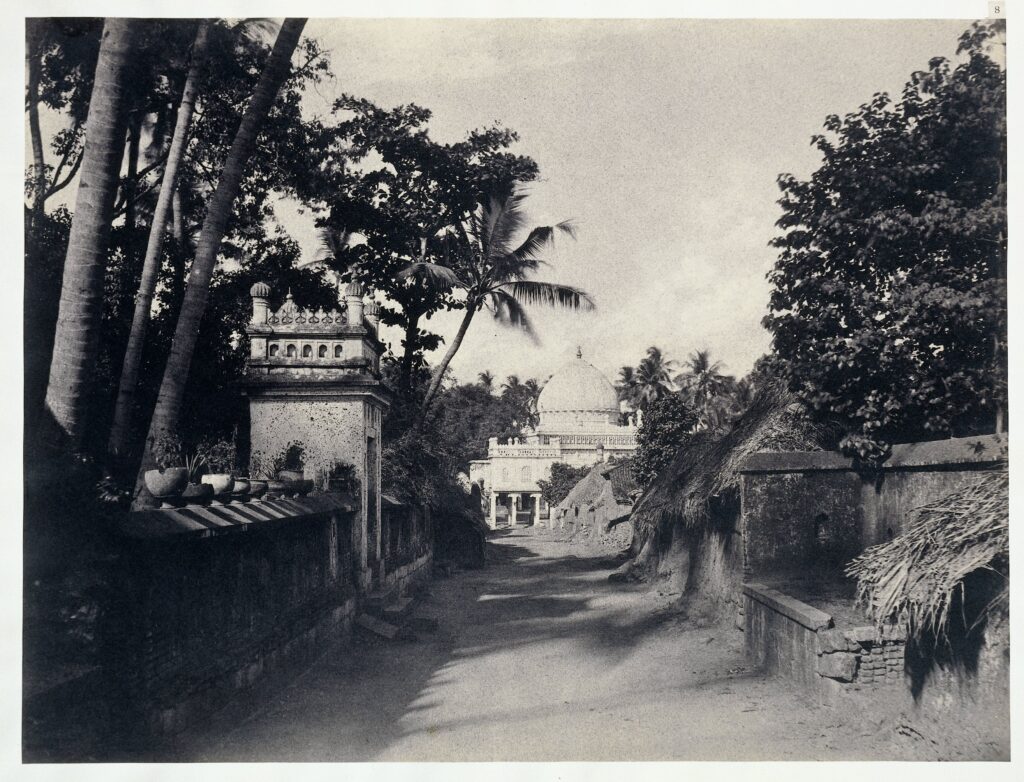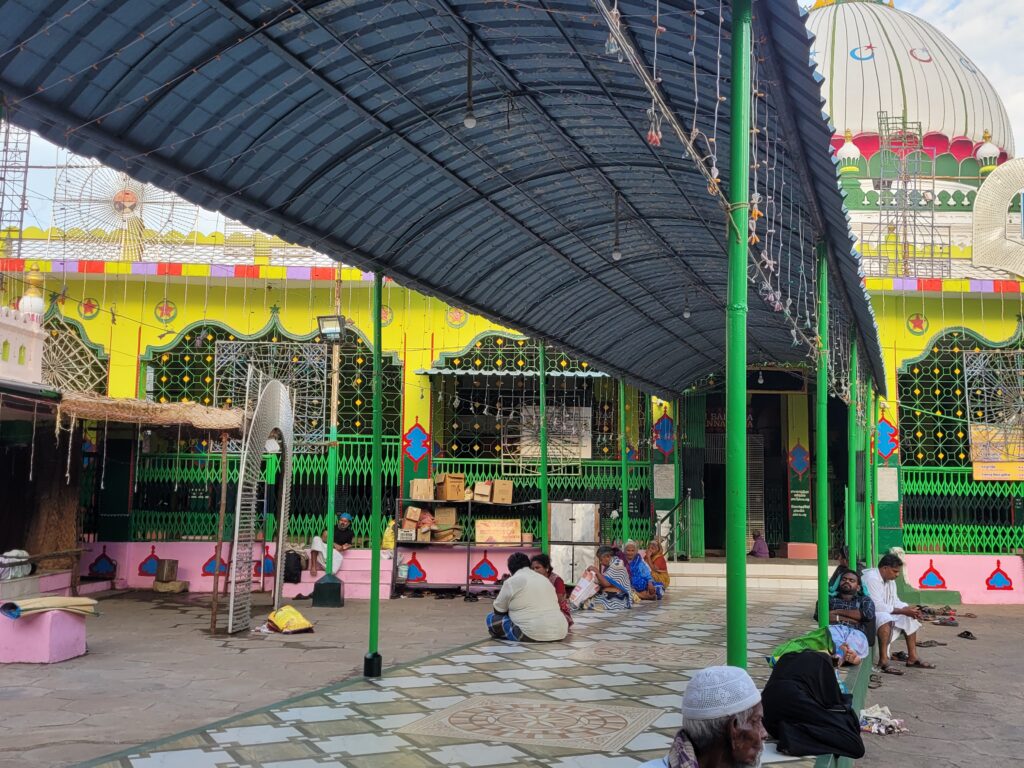
By Abinaya Sivagnanam
In the heart of Tamil Nadu lies Tiruchirappalli (or Trichy), home to the Hazrath Thable Alam Badusha Nathervali Dargah. The shrine is a testament to the centuries-old Islamic tradition and spiritual solace in southern India. This site is not just a place of worship but a mosaic of history, culture, and unwavering faith that tells the remarkable story of Islam’s roots in southern India.
The story of Islam’s entry into South India is as intriguing as it is unique, given that it is usually overshadowed by narratives from the north. Unlike the northern territories of India, where the spread of Islam was often accompanied by the tumult of conquests and kingdoms rising and falling, the southern narrative is markedly different.
In southern cities like Trichy, Islam made its presence felt through peaceful means, primarily via the Arab traders who arrived on the Coromandel Coast in the 8th to 10th centuries. These traders were not just merchants of silk and spices but also bearers of new religious and cultural ideas. Among these bearers, Hazrath Nathervali stands out, in whose honour the shrine was constructed.

The Legacy of Sultan Muthaharudeen: Nathervali
According to legend, he was born of Turkish-Syrian lineage as Sultan Muthaharudeen in 927 A.D. in Suharwardy, near present-day Samarkand, he renounced his royal life at a very young age and embarked on a spiritual odyssey that led him and his 900 followers to the shores of Bhatkal, and eventually to Trichy, around the late 10th century.
His journey from Suharwardy epitomizes the essence of Sufism – renunciation of worldly pleasures for divine pursuit. The narrative of his confrontation with a jinn, particularly illustrative of his spiritual stature, shows him as a figure of peace rather than conflict. As the story goes, upon his settlement in Trichy, Nathervali was challenged by a malevolent jinn. But instead of facing the jinn with fear or violence, he engaged the creature in a spiritual duel that ended with the jinn’s submission to his divine authority.
This tale is among the many that attracts pilgrims to the dargah today in Trichy, seeking the saint’s blessings and protection.
Spread over 2 acres, the Nathervali Dargah is among the oldest Sufi shrines in India. The shrine’s establishment in the 10th century in Trichy coincided with the period of the later Cholas, a time renowned for its architectural splendor and a burgeoning trade network that welcomed diverse cultural influences.
According to legends told at the Dargah, Hazrath Nathervali, upon arriving in Trichy, stayed for some time at Rockfort (a hillock shrine), and when asked by the Chola king to select a place and make it his home, he threw his amulet from the Rockfort and it landed on a temple. The king still offered the land to Hazrath who set the foundation of what would become the Dargah in its present location.
This period was marked by notable religious tolerance and the Dargah, thus, became not only a spiritual center but also a symbol of the Chola era’s cosmopolitan ethos. This era, celebrated for its remarkable artistic and architectural achievements, also exemplified an openness to diverse cultural and religious influences, fostering a cosmopolitan atmosphere that is often overlooked.

The Chola period (spanning over centuries) in Tamil Nadu, distinguished by its peaceful coexistence and cultural exchanges, presents a contrasting narrative to the commonly discussed Islamic conquests in northern India. This aspect of Tamil Nadu’s history, showcasing a different facet of the Islamic experience in India, seldom receives the attention it deserves and is overshadowed by tales of empire-building. Acknowledging this narrative is crucial for a more comprehensive understanding of India’s diverse cultural heritage and the varied experiences of Islam spread across the subcontinent.
In the complex tapestry of Trichy’s history, Chanda Sahib emerges as a figure of significant intrigue in the 18th century. A former minister turned ambitious Nawab of the Carnatic (Southeastern India), from 1749 to 1752. He was a subject of the Mughal Empire but allied himself with the French during the Carnatic Wars. He regularly clashed with Muhammad Ali, his British-supported rival.
As Nawab of the Carnatic, Chanda Sahib craved not just regional dominance, but a powerful ally. When Hyderabad faced a succession crisis after the First Nizam of Hyderabad died in 1748, Chanda Sahib saw an opportunity. He threw his weight behind Muzaffar Jung, the late Nizam’s grandson, believing a friendly Nizam would bolster his own position in the Carnatic.
Chanda Sahib’s gambit paid off in a couple of years. French military support helped Muzaffar Jung overcome his rivals and secure the Hyderabad throne by December 1750. However, this victory came at a cost. The violent power struggle destabilized Hyderabad. Internal factions jockeyed for influence, and the city became embroiled in the wider Carnatic Wars (1749-1754). Muzaffar Jung’s reign was short-lived and riddled with challenges. The conflict left Hyderabad’s treasury drained and its defenses weakened. Chanda Sahib’s ambition to secure his own power had inadvertently plunged Hyderabad into a period of political and economic turmoil.
Yet, despite his political ambitions and the turmoil he was involved in, Chanda Sahib’s contributions to the Nathervali Dargah were profound. His patronage, particularly the addition of the shrine’s 70ft grand dome, underscores the dargah’s importance as a center of Islamic learning and spirituality during a time of political upheaval.
Some of the other famous patrons of the Dargah include Rani Mangammal and Rani Meenachi Ammaiyar of the Madurai Nayak dynasty. Their patronage further illustrates the dargah’s role in bridging communities. These luminaries from Tamil Nadu’s history, known for their wisdom and governance, endowed the shrine, reinforcing its sanctity and the shared heritage of the region.
The Annual Urs at Nathervali Dargah
The Urs, preparations for which start on the first day of Ramzan reaches its culmination on the 14th day, marking the anniversary of Sultan Mutahirruddin Nathervali’s passing. The ceremonies commence with the arrival of the sandalwood paste utilized for the “Sandanakoodu” celebration, wherein the fragrant paste is applied to various sacred locations at the shrine.
This event is a cornerstone of the Nathervali Dargah’s spiritual calendar, drawing devotees from across Tamilnadu, Karnataka and Kerala to participate in a series of rituals and communal activities, with the preparation and sharing of biryani being a highlight.
A highlight of the occasion is the preparation and sharing of biryani, with an astounding 3,000 to 5,000 kilograms being cooked for charitable distribution on the day before and the day of the “Sandanakoodu” celebration.
Throughout the night, the melodious strains of Qawwalis resonate, their verses singing praises in honor of Hazrath Nathervali. The Urs serves as a vibrant testament to Nathervali’s enduring spiritual legacy and the community’s commitment to preserving the values of love, tolerance, and unity that he espoused.
In an era where societal divides seem ever more pronounced, the story of the Nathervali Dargah in Trichy serves as a powerful reminder of our shared humanity and the enduring capacity of faith to bring us together. The Dargah’s spirit of inclusivity extends to all visitors, regardless of their faith.
While the inner sanctum, harbouring the tomb of Nathervali, remains a sacred space for male visitors, the welcoming atmosphere of the Dargah as a whole reflects its role as a beacon of peace and unity. My own experience of being warmly received, even as a non-Muslim woman, speaks volumes about the dargah’s commitment to fostering a sense of belonging and mutual respect among all who seek its tranquillity.
Through its rich history, cultural legacy, and the annual celebration of the Urs, the Dargah continues to stand as a testament to the values of peace, tolerance, and understanding that are as relevant today as they were centuries ago.



